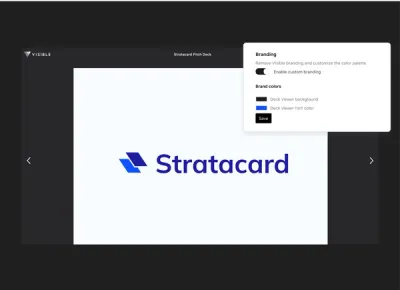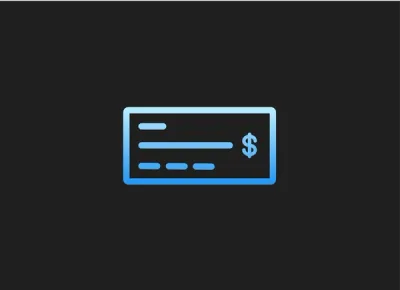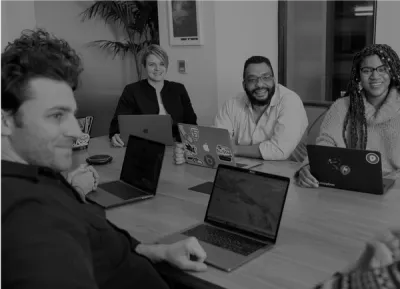Blog
Fundraising
Resources related to raising capital from investors for startups and VC firms.
All
Fundraising Metrics and data Product Updates Operations Hiring & Talent Reporting Customer Stories

founders
Fundraising
The Past, Present, and Future of VC Funding with Anne Dwane of Village Global
On episode 8 of the Founders Forward Podcast, we welcome Anne Dwane. Anne is the partner and co-founder at Village Global — an early-stage venture capital firm backed by successful entrepreneurs.
About Anne
Anne has a unique perspective on the VC space as she founded her first successful startup, Military.com, in the 1990s. After Military.com, Anne founded a startup later acquired by Chegg where she helped scale as they went public. Anne joins us to share what she has learned from time in the space. We discuss who founders should look to for advice, the thought process behind the roster of Village Global’s LPs, and how founders can build a fundraising process.
Our CEO, Mike Preuss, had the opportunity to sit down and chat with Anne. You can give the full episode a listen below:
What You Can Expect to Learn from Anne
What Anne learned from helping scale Chegg
How the startup world has transformed since her time founding Military.com in the 90s
Why founders should look for a “thought partner”
Why founders funding founders is a good thing
How to build a fundraising process
What she likes to see in a cold email from a founder
Related Resources
Anne’s Twitter
Anne’s LinkedIn
The Village Global application
Village Global’s Visible Connect Profile

founders
Fundraising
Product Updates
Introducing Decks — Manage Your Raise From Deck to Check
The pitch deck is the core marketing asset that jumpstarts any fundraising effort. It acts as the catalyst for connection, conversation, and relationship building.
How Pitch Deck Sharing Works
We talked to hundreds of founders, and three problems emerged around pitch deck sharing:
I’m not sure how prepared a potential investor is before heading into a meeting.
I’m under-networked. I share my deck to get meetings but want to understand who is engaged.
I iterate on my deck every hour. Sharing the latest version is a pain.
Introducing Visible Pitch Decks
Today, we are launching Decks. A dead-simple way to host and share a pitch deck on Visible. Decks are completely integrated with our fundraising crm and leading investor updates platform. You’ll be able to set customized sharing permissions, notifications when investors view your deck, upload new versions without clicking a button, and understand how potential investors have engaged with your content.
Just as a sales team has dedicated tools for their day-to-day, founders need dedicated tools for managing the most expensive asset they have, equity. Our community can now find investors, track a fundraise, and share a pitch deck directly from Visible and completely integrated.
Want to see a Deck hosted on Visible in action? Take a look here.
Whether we are building fundraising automation with our Zapier Connection or crafting integrations with companies like ProfitWell, we are driven by giving founders a better chance of success. It is going to be a very fun fall 😉
Up & to the right,
Mike & The Visible Team

founders
Fundraising
Operations
Customer Stories
How Design Can be a Competitive Advantage with Kristian Andersen of High Alpha
On episode 7 of the Founders Forward Podcast, we welcome Kristian Andersen. Kristian is a founder and partner at High Alpha, a venture studio located in Indianapolis.
About Kristian
Before launching High Alpha, Kristian founded the prolific design agency, Studio Science. During his time at Studio Science, Kristian primarily served software companies which ultimately led to him being a founding partner at High Alpha. Between Kristian’s experience at Studio Science and his time at High Alpha helping launch 30+ companies, it is safe to say he knows a thing or 2 about design and storytelling. Kristian joins us to break down how design can be a competitive advantage, the importance of storytelling in business, the High Alpha Studio model, and much more.
Our CEO, Mike Preuss, had the opportunity to sit down and chat with Kristian. You can give the full episode a listen below:
What You Can Expect to Learn from Kristian:
How the High Alpha Studio models work
What kind of co-founders they look for at High Alpha
How design can be a competitive advantage
Why storytelling is important in business and fundraising
Why Coco Chanel, Teddy Roosevelt, and Ralph Lauren are great storytellers
What he likes to see in a cold email from a founder
Related Resources:
Kristian’s Twitter
Kristian’s website
Apply to become a High Alpha Co-founder
High Alpha’s Visible Connect Profile

founders
Fundraising
Reporting
10 Fundraising Takeaways from Season 2 of the Founders Forward
We are just over halfway through season 2 of the Founders Forward. We’ve talked to 6 awesome investors and have dug into everything from pitch decks to mental health.
To recap the first half of the season, we’ve shared our favorite quotes and thoughts from the season so far below. If you’d rather skip to a specific episode, you can do so below:
The Supply & Demand of Venture with Kenn Shasta
One of the questions we have asked all guests this year is, “What is one tip to help founders create momentum in their fundraise?” We’ve heard a flurry of great answers but really love the advice from Kenn So of Shasta Ventures.
Kenn recommends founders start to include target investors on their monthly/quarterly Updates. This way investors already know what’s going on and have already build a trend line when it comes to your company. Give the full episode a listen below:
Creating Momentum in Your Fundraise with Brett Brohl
One of the most common mistakes we see founders make is underestimating the amount of time it takes to complete a fundraise. From finding and researching investors to signing a term sheet can take 5+ months. We love how Brett Brohl of Bread & Butter Ventures broke down a fundraise into 5 months, or 1-3-1:
1 month — Researching and finding the right investors
3 months — Actively pitching investors
1 month — Time to close after it is fully committed
To learn more fundraising tips and advice for seed-stage founders, give the full episode with Brett a listen below:
How to Create FOMO During a Fundraise with Elizabeth Yin
When going out to raise a round of capital, most founders assume that you should try to find a few large investors that can fill the round so you can be done. However, Elizabeth Yin of Hustle Fund argues that small checks can be a really powerful tool.
While there are certainly some downsides, smaller checks allow you to create momentum and build your network. Elizabeth shared an example of a portfolio company that landed one small investor who ended up introducing them to the majority of their investors. Give the full episode with Elizabeth a listen below:
Building a Calm Company with Tyler Tringas
One of the questions we have asked all guests is, “What catches your eye in a cold email from a founder?” Tyler Tringas of Calm Company Fund had a great and unique take. Tyler likes to see a quick video of the product actually working. This can help create excitement and give him an idea of the state of the product.
Give our episode with Tyler a full listen below:
How Founders Can Address Their Mental Health with Ezra Galston
Before sitting a meeting with an investor there is an expectation that you will send over some kind of pitch deck or data or synopsis. Some investors will tell you full deck. Others might suggest a mini-deck. Regardless of the medium, Ezra Galston of Starting Line just wants enough context to have a good conversation.
Sending over enough context beforehand enables Ezra to understand some basics and have enough information to dig into questions and have a strong conversation. Give our interview with Ezra a full listen below:
All Things Community-Led Growth with Corinne Riley
A seed-stage and Series A fundraise can feel quite different for a founder. At the seed stage you likely have little to no revenue, few metrics, and a simple product. By the time you get to your Series A, you likely have product-market fit and have a solid revenue base. While the business might look different, some parts of your pitch stay the same.
We love how Corinne Riley of Greylock breaks down constant things she looks for in a pitch, regardless of stage. Give the full episode with Corinne a listen below:
How Design Can be a Competitive Advantage with Kristian Andersen
A successful pitch and story can make or break a fundraise. As the co-founder of the venture studio, High Alpha, Kristian has helped countless early-stage companies craft their narratives and build their pitch deck.
In our interview with Kristian, he points out the importance of starting with your story when crafting your pitch deck.
The Past, Present, and Future of VC Funding with Anne Dwane
As a first-time founder, finding someone you can lean on for advice and experience can be crucial. Anne Dwane of Village Global recommends that founders can find a “thought partner.” This might be a peer that is someone who is at a similar stage or only a step or 2 ahead.
Determining if an Accelerator is Right For You with Lisa Besserman
The importance of being able to send a strong cold email was a consistent topic with all of our guests this season. More than anything else, Lisa Besserman of Expa likes to see a deck from a founder. In our interview with Lisa, she breaks down what specifically she likes to see in a deck as well.
How to Build an Investor List with Gale Wilkinson
Fundraising generally mirrors a traditional B2B sales funnel. Just like a sales funnel, you need leads and a strong customer profile at the top to fuel your process. Gale Wilkinson of Vitalize suggests that founders have a running list of investors that are a fit for your business.

founders
Fundraising
How to Model Your Seed Round With Yin Wu of Pulley
Raising capital in the early days of your business can have major implications later in your company lifecycle. Yin Wu, CEO of Pulley, joined us to walk through what to consider when determining how much to raise, setting valuations, and more.
Yin joins us to talk about all things fundraising, cap tables, valuations, and dilution. You can expect to dig into some of the following topics
Who should raise venture capital
What is impacting recent valuations
Raising using SAFEs
Determining how much to raise
Setting your company valuation
How much dilution a seed company should expect to see

founders
Fundraising
Operations
Metrics and data
All Things Community-Led Growth with Corinne Riley of Greylock
On episode 6, season 2 of the Founders Forward Podcast, we welcome Corinne Riley. Corinne is an investor at the prolific venture capital firm, Greylock, where she primarily invests in B2B companies.
About Corinne
Over the course of her career, Corinne has built a knack for helping companies build and develop a go-to-market motion. Corinne has extensive knowledge of community-led growth and helping companies grow at the earliest stages of their business. Corinne joins the show to break down community-led companies and the thought process behind her investment decision-making.
Our CEO, Mike Preuss, had the opportunity to sit down and chat with Corinne. You can give the full episode a listen below:
What You Can Expect to Learn from Corinne
What a community-led company is
How community-led growth can be a moat
What the community commitment curve is
What changes between a seed and series A pitch
What data she would expect to see in a Series A company
What she likes to see in a cold email from a founder
Related Resources
Corinne’s Twitter
Common Room & Uncommon
Corinne’s post on Community-Led Growth
The Business of Belonging
Greylocks’s Visible Connect Profile

founders
Fundraising
Mike’s Note — Progressive Disclosure
Progressive disclosure is an interaction design principle that sequences screens, so users do not feel overwhelmed and inevitably bounce.
Progressive Disclosure & Fundraising
Founders should take note of this principle when reaching out to potential employees and investors. Your goal is always to get to the next step, not get hitched after 2,000 words. If you are connecting with someone for the first time, your goal should be to receive a response. Keep things between 50 to 250 words (just like this note).
As Kunu says, do less.
Use Visible for Your Next Fundraise
No matter the series, size, or timing of your round, Visible is here to help. With Visible, you can manage every stage of your fundraising pipeline:
Find investors at the top of your funnel with our free investor database, Visible Connect
Track your conversations and move them through your funnel with our Fundraising CRM
Share your pitch deck and monthly updates with potential investors
Organize and share your most vital fundraising documents with data rooms
Manage your fundraise from start to finish with Visible. Give it a free try for 14 days here.

founders
Fundraising
Operations
How Starting Line Helps Founders Address Their Mental Health with Ezra Galston
On episode 5, season 2 of the Founders Forward Podcast, we welcome Ezra Galston. Ezra is the founder and partner at Starting Line, a consumer-focused VC fund located in Chicago.
About Ezra
As someone who has faced the ups and downs of being a founder (plus the stresses of fundraising), Ezra and the team at Starting Line has made mental health a focus. Every founder in the Starting Line portfolio receives a subsidy for “their first three sessions of therapy, executive coaching, or co-founder counseling (up to $200 each).” Ezra joins the Founders Forward to break down fundraising, founder health, and the consumer market/what excites the team at Starting Line.
Our CEO, Mike Preuss, had the opportunity to sit down and chat with Ezra. You can give the full episode a listen below:
What You Can Expect to Learn from Ezra
How a founder and board’s focus changes from early stages to later stage
How venture fundraising differs for the “haves” and “have nots”
How Ezra’s experiencing raising capital has impacted how he views fundraising
Why Starting Line has a focus on their portfolio founder’s mental health
How Starting Line subsidizes mental health sessions
Why fundraising is a relationship-based activity
Why he likes plenty of context before a meeting with a founder
Related Resources
Ezra’s Twitter
The Starting Line Operating Manual
Starting Line’s Visible Connect Profile

founders
Fundraising
Operations
Customer Stories
Building a Calm Company with Tyler Tringas
On episode 4, season 2 of the Founders Forward Podcast, we welcome Tyler Tringas. Tyler is the founder and General Partner at Calm Company Fund (formerly Earnest Capital). The Calm Company Fund invests in exactly what it sounds like — “profitable, sustainable, calm businesses.”
About Tyler and Calm Company Fund
Tyler offers a unique perspective as someone who invests in companies that may not be the huge companies that a traditional venture capitalist eyes. He joins us to break down what exactly a “calm” business is, the current market dynamics that are creating more need for funders like Calm Company Fund, and much more.
Our CEO, Mike Preuss, had the opportunity to sit down and chat with Tyler. You can give the full episode a listen below:
What You Can Expect to Learn from Tyler
How companies in smaller markets can still be winners
What a SEAL is and how Calm Fund uses them
The market dynamics creating a need for more funding options like Calm Fund
Why and how they raised crowdfunding
How Calm Fund and Venture Capital can co-exist for startups
How to best cold email investors
Related Resources
Tyler’s Twitter
Calm Capital — What We Invest In
Shared Earnings Agreement
Our Original Sit Down with Tyler
The Calm Fund Visible Connect Profile
Bootstrapping 101: Pros & Cons of Bootstrapping Your Startup

founders
Fundraising
Reporting
How to Create FOMO During a Fundraise with Elizabeth Yin of Hustle Fund
On episode 3, season 2 of the Founders Forward Podcast, we welcome Elizabeth Yin. Elizabeth is the founder of Hustle Fund, a venture fund for “hilariously-early founders.”
About Elizabeth
As a past founder and current investor (and a founder favorite Twitter follow), Elizabeth knows what it takes to successfully raise a round of venture capital. Elizabeth breaks down how founders can leverage tranches, raising from small funds and angels, and shares other tactical tips to knock out your seed round.
Our CEO, Mike Preuss, had the opportunity to sit down and chat with Elizabeth. You can give the full episode a listen below:
What You Can Expect to Learn from Elizabeth
How to raise capital from angels
How small checks can lead to big checks
How tranches can be an effective way to raise capital
How tranches and meeting cadence can create FOMO
Why you should have a 5 slide deck
What changes between a Seed and Series A round
How to get the attention of an investor via cold email
Related Resources
Elizabeth’s Twitter
Hustle Fund’s Connect Profile
AngelSquad by Hustle Fund

founders
Fundraising
Reporting
Customer Stories
Creating Momentum in Your Fundraise with Brett Brohl
On episode 2, season 2 of the Founders Forward Podcast, we welcome Brett Brohl of Bread & Butter Ventures. Brett is the Managing Director of Bread & Butter Ventures as well as the Managing Director of the Techstars Farm to Fork Accelerator.
About Brett
As a past founder and current investor, Brett has a wealth of knowledge on how founders can best create momentum during a fundraise. Give Brett a listen as he walks us through best practices to build out a fundraising process.
Our CEO, Mike Preuss, had the opportunity to sit down and chat with Brett. You can give the full episode a listen below (or in any of your favorite podcast apps).
What You Can Expect to Learn from Brett
How to determine if VC is right for your business
How much time you should allocate for a raise
How to model financials for a fundraise
How to leverage investor Updates to speed up a fundraise
Why you should send a 4 slide pitch deck before a meeting
How you should think about moving investors through your funnel
Related Resources
Brett’s Twitter
Brett’s Fundraise Faster Video Series
Troy Henikoff Financial Modeling Series
The Bread & Butter Investor Update Template
Bread & Butter’s Profile on Visible Connect, our investor database

founders
Fundraising
Reporting
The Supply & Demand of VC with Kenn So of Shasta Ventures
On the first episode of season 2 of the Founders Forward Podcast, we welcome Kenn So of Shasta Ventures.
About Kenn
Kenn is an associate at Shasta and invests in B2B enterprise software companies (with a personal focus on Machine Learning).
Kenn joins the Founders Forward to break down the trends taking place that are influencing company valuations. We also dig into how founders can leverage investor updates and cold email to create momentum in a fundraising process.
Our CEO, Mike Preuss, had the opportunity to sit down and chat with Kenn. You can give the full episode a listen below (or in any of your favorite podcast apps).
What You Can Expect to Learn from Kenn
Why founders should take the time to pitch associates
The supply & demand of venture capital that are impacting valuations
Why the emergence of “mega-funds” is changing the VC landscape
The risk of raising at too high of a valuation
How to create momentum in a fundraising process using an email newsletter
What he likes to see in a cold email from a founder
Related Resources
Kenn’s Book, “Breaking into Early-Stage VC“
Kenn So on Tech Valuations
Kenn’s LinkedIn

founders
Fundraising
How to Pitch a Series A Round (With Template)
When is the right time to raise a Series A round of funding?
You made it past your initial seed funding round which means you successfully raised money on a story that got your investors excited about you as a leader and the vision of what you were building. You then turned that capital into a solid customer base, consistent revenue, or are hitting other KPIs relevant to your company and now you’re thinking about raising your Series A. At this point, you may be wondering when to start the fundraising process, how investor expectations have changed, and how to get in front of the right investors.
You are right to be asking yourself all these questions and mentally preparing to transition to a full-time job of fundraising. The reality is, Series A financing is much harder to obtain than seed financing. First Round Capital shares a founder’s perspective, “Our seed round was super fast and hyper-competitive, and then we went into the A and started getting interrogated about our data. It was like graduating from elementary school and going straight into college.”
To better understand how investors are thinking about the A round, Andrew Chen of Andreessen Horowitz distilled the early-stage investment thesis into this:
Pre-seed – Bet on the entrepreneur
Seed – Bet on the team
Series A – Bet on the traction
Series B – Bet on the revenue
Series C – Bet on the unit economics
There’s no getting around the fact that Series A are the new Series B and the heightened competition for capital at this stage means you need to go into the Series A fundraising process equipped with the knowledge and a level of preparedness that will set you apart from the others.
The right time to kick off your Series A fundraising process is… before you think. It’s a rare breed of founder that will tell you they closed a financing round in LESS time than they thought it would take.
Y Combinator suggests kicking off your fundraising when you have 9 months of runway left but you should be nurturing informal relationships with investors before then (view prospective Investor Update templates here). Additionally, you should always have a finger on the pulse of your burn rate and how it influences your runway. If you don’t know your key metrics cold, you’re not ready to fundraise.
Recommended Reading: The Understandable Guide to Startup Funding Stages
What if you’re running out of cash but still not hitting Series A benchmarks?
With the hurdles for Series A financing reaching new heights, it’s good to think about whether you’re really ready to set these types of expectations with investors. If not, it’s becoming more common for startups to raise seed extensions (Seed II, Seed Extension, Pre-A, etc) to supplement their growth until they are able to hit the milestones that Series A investors are looking for. If this sounds like you, be sure to know the difference between a bridge round and post-seed round.
The name of the financing round will attract different types of investors so be sure to consider this early on when developing your fundraising strategy.
What is the purpose of a Series A round?
To keep things straightforward, your seed-stage round was about achieving product-market fit. Your Series A round, typically between $2 million to $15 million, is about expanding your customer base and product offerings. Investors will also want to see you develop a strategy for generating long-term profit during this stage.
What types of investors are good for Series A?
It’s important to think strategically about what type of investors you want joining your cap table for your Series A, especially since the average investor + founder relationship is 8-10 years and investors’ brand, reputation, and resources can influence your chances of success.
To start narrowing in on what your potential investors will look like, check out this All Encompassing Fundraising Guide for Startups which includes an Ideal Investor Persona outline.
If you’re further along in the fundraising process and want to due diligence on an investor, here are some diligence questions to consider:
What do other founders in their portfolio (funded or failed) have to say about what the investor was like to work with during hard times?
What do your current investors think about this investor? Does this investor have a reputation for working well with others?
Does this investor have deep pockets? Are they a potential source of follow-on funding?
Do they have great brand recognition? Will being associated with their brand give you instant credibility?
Do they provide support in areas you need to grow? (CEO forums, marketing resources, etc?)
How available were they during the diligence process? (If they’re busy and hard to reach during diligence, this will likely remain the same or be worse after the deal closes.)
Do their ‘terms’ signal they’re in it for the long haul?
Avoid these Common Series A Mistakes
Being unclear about how much you’re raising
Ranges look indecisive and unresearched. Investors know that your numbers may change slightly but you should be raising the minimum amount needed to hit your Series B milestones. Y Combinator suggests this is typically ~3-5x your current numbers. Be sure to do your research in advance and have a specific ask.
Not learning from your investor meetings
You’re going to spend a lot of time talking with different investors but the truth is there is only a 1-10% chance that investor is going to give you money. This is why James Currier, General Partner at NFX, says it’s better to view meetings with investors as “an opportunity for you to build your company using the information you get from the VC, not just the money you might get. This will give you a higher return on your time.”
This means your pitch deck should be evolving over time as you meet with investors.
Not tailoring the deck to the investor
Just as you wouldn’t send the same resume and cover letter to different employers, you should be tailoring your Series A pitch deck to each investor.
Do some research in advance about their investment thesis, criteria, and current portfolio. Make sure you emphasize areas you know they care about.
LinkedIn can be a helpful tool to get to know more about an investor before your first meeting. For example, by taking a quick look at their profile you could learn they used to work for a potential customer of yours and then you can include their logo in your deck.
Wasting time on investors
You will certainly come across investors who will drag you along in the diligence process, keeping your hopes up, only to hear a ‘no’ for obvious reasons later on. Sometimes investors use the diligence process to do their own research on your sector even though they have no intention in investing.
To avoid this, listen for doubts during your first investor meeting. If they don’t think your market is big enough or don’t get excited about the problem you’re solving, pay attention to these signals.
You can also Automate your Investor Updates to keep relationships warm without wasting time.
Recommended Reading: How to Write the Perfect Investment Memo
Tips on Pitching a Series A Round
Before you start setting up meetings with potential investors it’s wise to invest ample time clarifying your fundraising narrative and creating a winning pitch deck.
Tip #1: Start brainstorming your Series A fundraising narrative in a word document before you even open PowerPoint. This will allow you to focus on the important parts of your story without getting distracted by slide formatting.
Once you feel confident about the fundraising narrative you’ve outlined in a document, it’s time to make it more digestible for investors.
Tip #2: Create a ‘listen to me’ version of your deck in PowerPoint with more visuals and less text (10-14 slides) and a ‘read me’/send away version with more detail (20-22 slides).
Here’s an overview of recommended slides to include in your Pitch Deck:
Company Purpose
Problem
Solution
Why Now
Market Size
Competition
Product
Traction
Business Model
Team
Financials
Ask
Summary
Back Pocket Slides
Tip #3: Practice your pitch with current investors, peers, friends/family. Your back pocket slides should include information that answers the most common questions people are asking.
Let’s break down what to include in your Series A Pitch Deck even more:
Company Purpose
This should be concise and can be displayed in a memorable, punchy sentence on your first slide.
Problem
The title of the slide should boldly communicate the problem you are solving. Consider including a graph/figure/image to demonstrate the gravity of the problem.
This is your chance to connect with the investor and get them to relate to what you’re trying to accomplish. Are there storytelling examples you can give? How can you make them ‘feel’ the problem?
Solution
This slide should focus on ONE solution and it should come across as clear and concise.
You should answer the questions — How are you solving the problem? What is your vision and strategy? How are you making the customer’s life better?
Feel free to highlight use cases.
Why Now
Emphasize why investors are joining you at the right moment in time. You can highlight the historical evolution of your industry and define recent trends that make your solution possible. It’s important to highlight growth trends in the market so as not to assume the market has already hit its peak.
Market Size
Investors want to know you’re creating a solution for a BIG market because market size correlates to potential returns for an investor down the line. Be sure to tell them just how big the space is and your potential market share. To do this you can calculate the Total Addressable Market (TAM), Serviceable Available Market (SAM), and Serviceable Obtainable Market (SOM).
Competition
It’s never a good idea to talk bad about your competitors or say you’re the only solution on the market, both approaches make you seem naive. Instead, focus on how you are differentiated and solving a pain point keenly felt by the market.
Tip #4: If you don’t think you have competitors, you haven’t done your research. Crunchbase or Pitchbook are a good place to research other players in the space.
Product
Get investors excited about the state of your product but don’t spend too much time walking through all the hard work it’s taken you to get there. While reaching milestones on time demonstrates your ability to execute, investors care less about past work and more about where you’re headed.
In this slide you can highlight the product features, architecture, IP, etc. Be sure to also share your product roadmap.
Traction
This is where you highlight your key metrics. This is arguably the most important slide because you’re showing the facts to back up your narrative.
Business Model
This is where you describe how you are making money, your pricing strategy, margins, etc. If it makes sense, you can highlight your sales funnel or metrics such as average account size.
This slide should make your investors very confident in the future positive cash flow of your company.
Team
Just include your key team members and bullet point bios. Consider including logos from reputable past experiences if it makes sense. You can include a separate slide for Advisors.
Financials
Investors spend over 23% of their time reviewing this slide. Include just a summary on this slide and be sure to clearly communicate your numbers.
Be sure to include a more detailed overview of your P&L statements, balance sheet, cash flow, and cap table either in backup slides or another shareable format.
Asks
Outline your funding roadmap. What have you achieved with your funding to date? Clearly state how much you are asking for and what this capital is going to help you achieve.
Summary
This final slide tends to stay up on the screen for a while. Instead of including a ‘thank you’ slide, include a summary of your key points. This can spur a more robust Q&A and is an effective way to summarize the most poignant parts of your pitch.
Affordable ways to build a great looking Pitch Deck
If building attractive slides is not your strong suit, there are a lot of excellent pitch deck designers to be found online. However, if you’re looking to improve your deck design but not break the bank, consider looking for pitch deck designers on UpWork, Fiverr, or 24slides for a quick turnaround.
While it’s important to have professional looking slides that effectively communicate your fundraising narrative, remember, investors invest in teams not slides. Aim to be well-rehearsed, conversational, and treat your Q&A like an interview. In addition to evaluating your business’ potential, investors are using this time to assess you for coachability, credibility, and personability.
The Do’s and Don’ts of Creating your Series A Slide Deck
Do:
Do brainstorm your pitch narrative in a Word document first so you can focus on the narrative before getting distracted by formatting. Make a copy of this framework to get started.
Create a ‘listen to me’ version with more visuals and less text (10-14 slides) and a ‘read me’/send away version with more detail (20-22 slides)
Aim to present it in 20 minutes
Do use 34 point font for your ‘listen to me’ version
Do include a one sentence summary at the top of each slide
Don’t:
Exceed 25 words per slide
Use acronyms
Downplay your competitors
Use animations or transitions
Use photos without captions or titles
Use excessive explanations or caveats
Use excessive branding per slide
Recommended Reading: How to Write the Perfect Investment Memo
Download our Free Template
The process of raising your Series A may seem daunting, especially since only ~30% of founders who raised seed funding close a Series A round. This is all the more reason to make sure you’re equipped with the knowledge and resources you need to lead a successful Series A campaign.
Start by clarifying your Series A fundraising narrative before you even dive into your pitch deck. Then you can move onto creating your Series A Pitch Deck by using this template which you will want to iterate as you get feedback from investors.
Related Resource: Pitch Deck Design Cost Breakdown + Options
Next, you should curate a list of prospective investors. You can use Visible’s connect database to narrow in on your list and manage these contacts in a Fundraising CRM.
If you’re not already doing so, you should be sending out regular updates to keep in warm touch with potential investors. Companies you send out regular updates are 300% more likely to get funded. Check out Visible.vc’s library of Investor Update Templates to get started today.

founders
Fundraising
7 Tips for Raising a Friends & Family Round
The most common startup funding stages are: Pre-Seed, Seed, Series A, Series B, and Series C. As the company matures and develops it moves through each of the rounds as it seeks further funding. It all begins at a pre-seed or seed round where companies are often still pre-revenue which is why raising capital, from friends and family for instance, is so important to help get ideas off the ground and form a company from it.
Preseed can also be considered a seed round, since it’s also a startups earliest funding stage and includes investment from angels or friends and family. Some note that the main difference between seed and pre-seed is that a pre-seed round is often much less (usually under $150,000k but can also go up to $2 million). It is also obtained through sources outside of any kind of institution, like a bank. It is still common though in the pre-seed round to give up equity in exchange for capital.
Three of the main sources for pre-seed funding come from either angel investors, the company founders themselves, or friends and family. The terms and conditions for angel investors though are often different than what you might offer to people you know directly. It’s worth mentioning that this doesn’t mean you shouldn’t provide clear terms to your friends and family, it just means you might structure it a bit differently.
Why Should You Raise Money From Friends & Family?
Different funding options make sense at different stages of a business’s lifecycle. For example, raising capital with a simple idea and business plan varies greatly from raising capital when you have $100M in revenue. In the early days, more founders are turning to their friends, family, and immediate network to launch their business and prove its ability to grow into a larger organization.
Pre-seed funding is used to start the company itself and is therefore considered more of a high-risk investment since it hasn’t had the chance to prove itself. This can make it harder to gain capital from traditional investors or a bank, which is why seeking funding from friends and family can often be an easier choice.
This risk is often compensated through more equity given to those who invest early (when the company is at its lowest valuation) rather than later. This makes it compelling and rewarding for those who invest early and is often why there are angels who specifically seek out early-stage companies to invest in, while they are (pre)seed.
Knowing this can help shape your mindset from feeling like you’re asking a favor from your friends and family to inviting them to have the opportunity to invest early and reap the potential financial success that can be gained from their investment in your company.
Elizabeth Yin, Founder of the Hustle Fund, is a huge believer in small checks from friends and family, check out her thoughts below:
Raising from friends and family can also be beneficial because you have people who are not only financially invested but personally invested as well. What people don’t often realize is that your investors will often become contributors to your business in the form of feedback, guidance, and suggestions. When your investors are your friends and family though, you can trust that these suggestions not only have your companies best interest at heart but your own as well.
Who Counts as Friends & Family?
It is your job as a founder to uncover the potential investors around you. Seeking out VCs is generally a bit more cut and dry (check out our investor VC database, Visible Connect) than friends and family. For example, friends and family investors could be:
Relatives
Friends or friends of friends (try seeking out the ones that have relevant experience or have a relevant network of people they can reach out to)
People you know from school (mentors, professors, classmates)
Past work colleagues
Community members (virtual or in-person networks that you’re a part of, such as mastermind groups, co-working spaces, and business networks)
Who Should you Approach for a Friends and Family Round?
This question is best approached by first assessing what kind of round you’ll raise from them- such as equity, convertible notes, loan, or gift. Since this method of fundraising isn’t as straightforward it is important you first decide the form of investment you will take (more information on that to come) since this determines the role that they will play in your company in the future. If you want them to have a seat at the table and are hoping they can bring value through their expertise and network, then it is important that you are more selective. If you are raising via a crowdfunding platform, in the form of a loan, or as a gift then it is likely that your friends and family will have little to no involvement in your business, which means you do not need to be as selective for who participates in the round.
Most importantly you want people to invest who believe in you and your business, who understand that there is risk involved, and only contribute what is feasible for them. Lastly, it helps if they understand your business and are able to contribute in other ways through their knowledge, connections, or ongoing support.
Who Should you Avoid Asking?
It is always tricky to mix family and friends with business or money which is something to be very aware of going into this. Taking certain precautions is advised to avoid any problems that may arise because of mixing personal relationships with business. One of these precautions would be to avoid asking the wrong people. Here are some examples of what to avoid:
People who you know will try to give feedback which will not be useful but will be expected to be taken
Someone who you can not have open, honest, and constructive communication with
If you know that the financial means of the person is unstable and they might be reliant on the money they are giving you
People who don’t understand investment risks and wouldn’t be ok to lose the money which they invested in you
Avoid these Common Mistakes
You want to make people aware that even though you see the opportunity in your business and want to assure it’s a success, there is always a risk of the business failing. Avoid asking people who are in a situation that if they lost the money they invested in you it would cause them serious hardship that could ultimately affect your relationship. You also don’t want to put anyone in a position that as a friend or family member you want to avoid seeing them in.
It’s also important to not make your friends and family feel pressured into investing, or bad if they choose not to. You can also let them know that you would also appreciate support in other ways such as time spent with you to discuss things you might be going through, feedback, or helping by creating awareness for your company (this could be in the form of word of mouth or reaching out to their network for additional support).
How to Raise a Friends and Family Round
Keep it Professional
You should try to be as professional as possible and treat communication and documentation of things as you would with a real investor. This means having a business plan, creating a pitch deck, and making sure to share any relevant metrics or successes you’ve had so far, as well as where you expect the business to go and how you plan to grow it.
Have a Number in Mind
Decide what your target number is that you want to raise and back that number up with the calculations you used to arrive there. This is an important step to share as people want and need to understand how you plan on spending their investment and the milestones you plan on reaching.
What are the Terms
Then determine what kind of round you want to raise from your friends and family. There are a few options that are very different from the other. The most common are; investment in return for equity in your company, loans, convertible notes, and donation based.
Once that is decided it’s best to create a formal contract that documents everything so it’s all clearly outlined and everyone can be held accountable by it.
Communicate
On an ongoing basis, you can communicate these updates in a less formal way through email, text, social media, etc. Staying in front of the people you potentially want follow on funding from is vital- this is true for this stage but will become even more crucial as you move further along in the next funding stages.
Test Social Media!
Before you even start pitching friends and family you can also leverage social media to do the pitching for you in an indirect way. Once you’ve caught their attention, spiked curiosity, and inspired them on your idea you might be able to already move them to want to make an investment before you even make the ask.
Tell a Story
Strengthen your storytelling abilities by taking people on your startup’s journey, so they feel involved and inspired. Having this skill is important as you try to move people to take action whether it be investors or customers. People are more inspired to make decisions when they feel they came up with the idea themselves through compelling factors they calculated based on the evidence you presented.
How to Make the Ask in an Indirect Way
Avoid coming across in a way as if you were asking for a favor, but rather that you want to offer them an opportunity to gain access to an idea that has great potential for success. They will realize themselves the added benefit that they are also helping you make your company a reality.
If you want to take yourself out of the equation to start, it’s best to utilize other platforms that can tell your story and reach more people in an indirect way. This could help ease any uncomfortable confrontations that might come from a direct no.
One option is to use a crowdfunding platform, which also allows you to have the opportunity to find other people who are interested outside of your network, so you’re casting a wider net when looking for those first investors.
Use the herd effect to help rally others to back your idea after you have your first initial investors on board. People are often motivated and prompted into action when they see that others around them are already taking part. Think of ways that you can showcase this (make sure you ask permission from those that you spotlight) on either a landing page, shoutout on social media, or mention in the opening text of wherever you might be directing people.
You can also ask friends and family who have already invested in you to share out information as well since they have proven to believe in your company and are likely able to advocate it well. Also if you were looking to get funding beyond just your inner circle this is a good way to do so as people are more likely to trust recommendations made by people they trust rather than companies themselves.
Related Resource: Our Favorite Seed Round Pitch Deck Template (and Why It Works)
Common Friends & Family Questions
How Much Capital Should You Ask For?
There is no right or standard number to go off of here as this completely depends on how much you need to get you through the first few months of your business until you either are making a profit or are ready to raise another round. Ranges are usually anywhere from $10,000 to $150,000 but can also go up to 2 million. Use modeling and advice from the market to get a ballpark idea. You can check out a template for modeling your early financials here.
How To Make Sure You Don’t Over-Dilute Your Equity?
You will want to set up anti-dilution provisions which help keep the percentage of the investor’s original ownership intact.
It’s a clause that is constructed into options and convertible preferred stocks that helps protect investors from their investment potentially losing value.
Anti-dilution provisions can discourage this from happening by tweaking the conversion price between convertible securities, such as corporate bonds or preferred shares, and common stocks. In this way, anti-dilution clauses can keep an investor’s original ownership percentage intact.
What Do You Offer Your Friends and Family for their Investment?
This depends on what kind of agreement you have come to with them based on if the money you are receiving is a loan, gift, or is in exchange for equity. No matter which option you decide to go for you would offer them a document which states in detail either the repayment options or how much stake they now have in your company.
How Do You Manage The Relationship Between Your Friends and Family Investors?
Just like with any other type of investor you want to keep things professional and offer them regular updates. As well make sure you have formalized and documented any agreements so that everything is in writing to make sure there is no confusion and everyone is on the same page.
How Do You Know When To Buy Out Toxic Investors?
If you feel that your relationship with your friend or family member is suffering or your business because of their involvement/ investment then it is a good idea to buy them out. It is good to be aware that this possibility exists no matter who it may be. It is wise to already think how you might do this and have something in writing as well that everyone agrees to ahead of time so if the time comes you already have an agreed upon course of action.
Use Visible to Manage Your Raise
When raising any round, it is most important to keep all stakeholders informed on your process and progress through documented updates. This is also a good practice for you because it forces you to track your success and evaluate important metrics you should be tracking. This process starts with your friends and family round and is good to strengthen for your later fundraising rounds.
Share with them anything and everything on your progress. This can include your wins, current status, relevant metrics, insights, and asks- where you could potentially use their help. This can be done through sending an email, arranging a call with all stakeholders, or recording a video to message out (this should be accompanied but something in written form though which is better for people to refer back to). To get inspiration on how an update should look, check out our update template library or try Visible for free to send out those first updates!

founders
Fundraising
SAFE Fundraising: When to Consider & Benefits
There are different instruments and financing options when it comes to raising capital for a business. SAFEs (or Simple Agreement for Future Equity) have been one of the more dominant options since Y Combinator introduced them in 2013.
As a founder it is important to know what financing options and instruments are available to your business. Learn more about SAFEs and what they mean when it comes to a fundraise below:
Related Resource: All Encompassing Startup Fundraising Guide
Note: We suggest consulting a lawyer when determining what financing options are right for your business.
What Does SAFE Stand For?
SAFE is short for Simple Agreement for Future Equity. As we mentioned above SAFEs were introduced in 2013 by Y Combinator and are here to stay. SAFEs are a type of convertible instrument that converts to equity at a later date. This means a founder is promising equity in their company at a later date when a founder goes out to raise money on a priced round.
As Paul Graham put it in the 2013 blog post announcing SAFEs, “A safe is like a convertible note in that the investor buys not stock itself but the right to buy stock in an equity round when it occurs. A safe can have a valuation cap, or be uncapped, just like a note. But what the investor buys is not debt, but something more like a warrant. So there is no need to fix a term or decide on an interest rate. Safes should work just like convertible notes, but with fewer complications.”
Related resource: The Startup's Handbook to SAFE: Simplifying Future Equity Agreements
The Difference Between SAFE Fundraising and Other Types of Investment Rounds
While SAFEs are popular in the market there are other funding options that can be compared to them. Learn more about how SAFEs stack up against other funding instruments below:
Related Resource: How to Secure Financing With a Bulletproof Startup Fundraising Strategy
Note: We suggest consulting a lawyer when determining what financing options are right for your business.
SAFE vs. a Priced Round
One alternative to a SAFE is a priced round. As the team at Vincent puts it, “A priced round is an equity-based investment round in which there is a defined pre-money valuation. This means that before completing the investment, the asset has a valuation and, thus, a price-per-share. In Venture Capital, priced rounds are the most common investment structure.”
This means that a company has a determined valuation when working through a priced round. As for a SAFE, you are setting a valuation cap to hit in the future. Because of this, SAFEs only require you to negotiate 2 things when raising:
How much money the investor will put into the company
What is the valuation cap
On the flip side, a priced round will require more negotiations as you are determining a valuation.
SAFE vs. a Convertible Note
Another funding option is a convertible note or convertible debt. As the team at Investopedia writes, “A convertible note is a debt instrument often used by angel or seed investors looking to fund an early-stage startup that has not been valued explicitly. After more information becomes available to establish a reasonable value for the company, convertible note investors can convert the note into equity. Investors have the option to exchange their notes for a predetermined number of shares in the issuing company.”
How Do SAFEs Work?
Of course, when seeking out to raise using a SAFE you should be able to understand the components of a SAFE. When looking at the document from the team at Y Combinator there are only 5 sections (link to the Y Combinator documents here):
Section 1 — Events
Equity financing – This explains what happens in the event of equity financing
Liquidity event – This explains what happens in a liquidity event
Dissolution
Liquidation priority – who comes first to be repaid in the listed events above.
Section 2 — Definitions
Section 2 will help you understand the different language and terms used throughout the document. A few of the key terms from section 2:
Section 3 — Company Representations
Section 4 — Investor Representations
Section 5 — Miscellaneous/Legal Language
We encourage founders to check out the document from Y Combinator above as they offer definitions and thorough breakdowns of how SAFEs work.
How Do SAFEs Benefit Investors?
SAFEs have not picked up in popularity by luck. SAFEs can be a beneficial instrument for both investors and founders. In order to understand if SAFEs are right for your business, you need to understand how they work from the investor’s perspective.
A Streamlined Process to Acces Early-Stage Investments
Due to the ease of negotiations when it comes to raising via a SAFE, investors are able to see more deals. For example, if an investor is constantly negotiating with potential companies, they will be hindered when it comes to deploying capital in an efficient way.
Ability to Convert Investments into Equity
Investors also have the ability to convert their investments into equity. Because of the valuation cap and discount rate, investors can convert their equity at better terms than newer investors.
How Do SAFEs Benefit Founders?
Of course, SAFEs only make sense if they are beneficial to you as a founder as well. As we’ve previously mentioned the main benefit of SAFEs is their simplicity for both founders and investors. However, there are a few other benefits:
Enhanced Flexibility With Shareholders
When making an investment via a SAFE, investors are not entitled to voting rights and rights that might create interference and additional work on a founder.
Faster Access to Financing
Speed is crucial when it comes to building and financing your business. SAFEs are a great tool to speed up a financing round and allow founders to get back to what matters the most, building their business.
3 Questions to Ask Before You Raise a SAFE
Before going out a raising a SAFE, there are a series of questions you should be able to confidently answer. As we’ve previously mentioned in this post, we suggest consulting a lawyer when determining what financing options are right for your business.
1) Are You Willing to Give Up Equity?
First and foremost, you need to ask yourself if you are willing to give up equity. Although you are not giving it up in the immediate, you ultimately are promising to give up equity at a later date. While it can be tricky to determine exactly how much you’ll be giving up, it is important to meet with lawyers and financial advisors to model how much you will be giving up.
2) Are You Considering Raising Money in Your Next Priced Round?
Seeing the future, especially as a startup founder, can almost feel impossible. But when it comes to a SAFE you should have an idea of how much you would like to raise in a future priced round. This way you’ll be able to avoid over diluting future investors and keep all parties involved happy.
3) How Will You Track Your SAFE Investments?
Of course, you’ll need to a way to track your SAFE and manage your cap table after closing a SAFE. We recommend using a cap table management tool, like the tool from the team at Pulley.
Learn More About SAFEs & Fundraising
SAFEs are one of the many funding options available to you as a startup founder. No matter what instrument or vehicle you determine is right for your business, you need to have a gameplan in place to find, nurture, and close potential investors. Learn more about how Visible can help you with your next fundraise here.
Unlock Your Investor Relationships. Try Visible for Free for 14 Days.
Start Your Free Trial